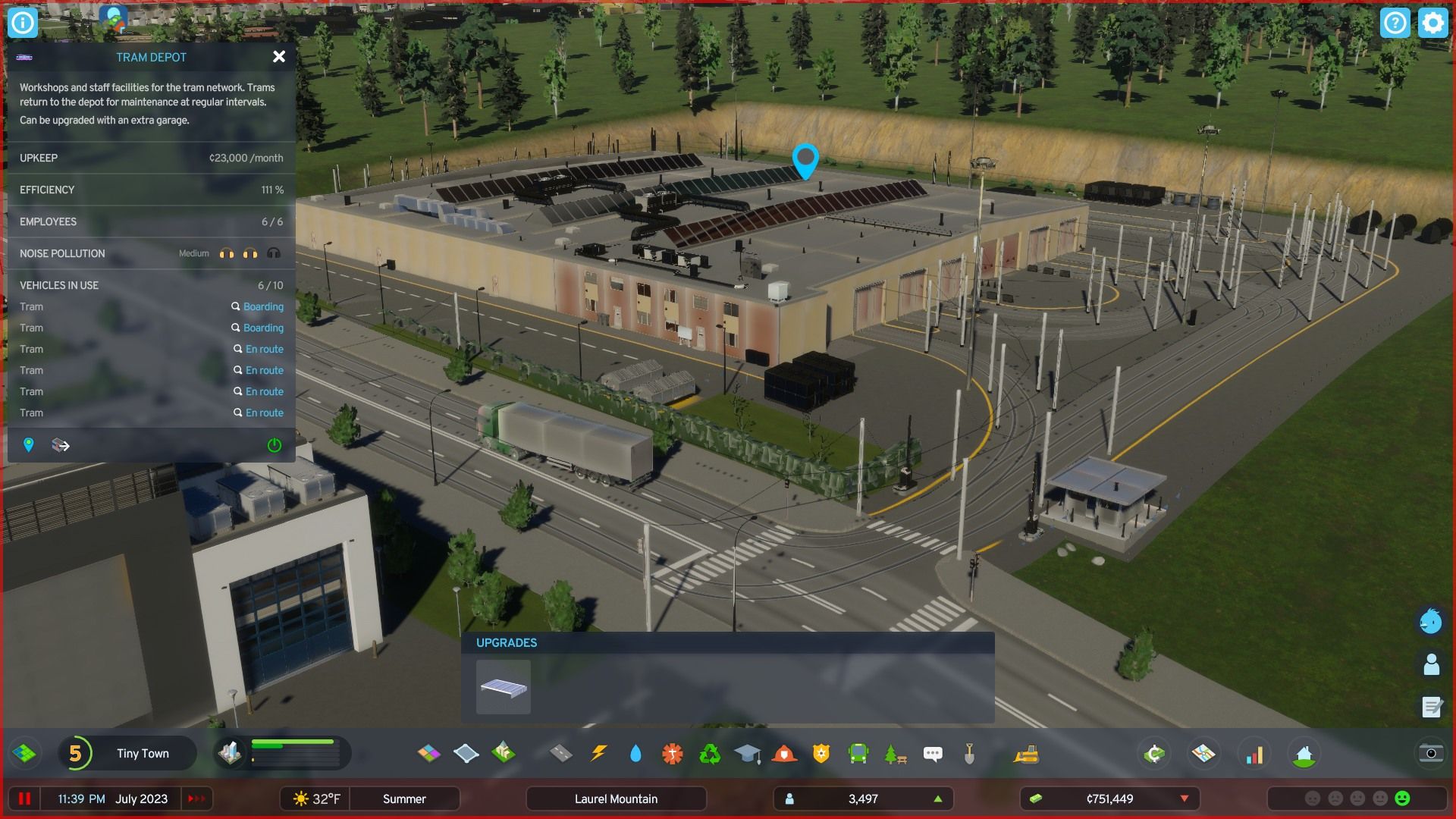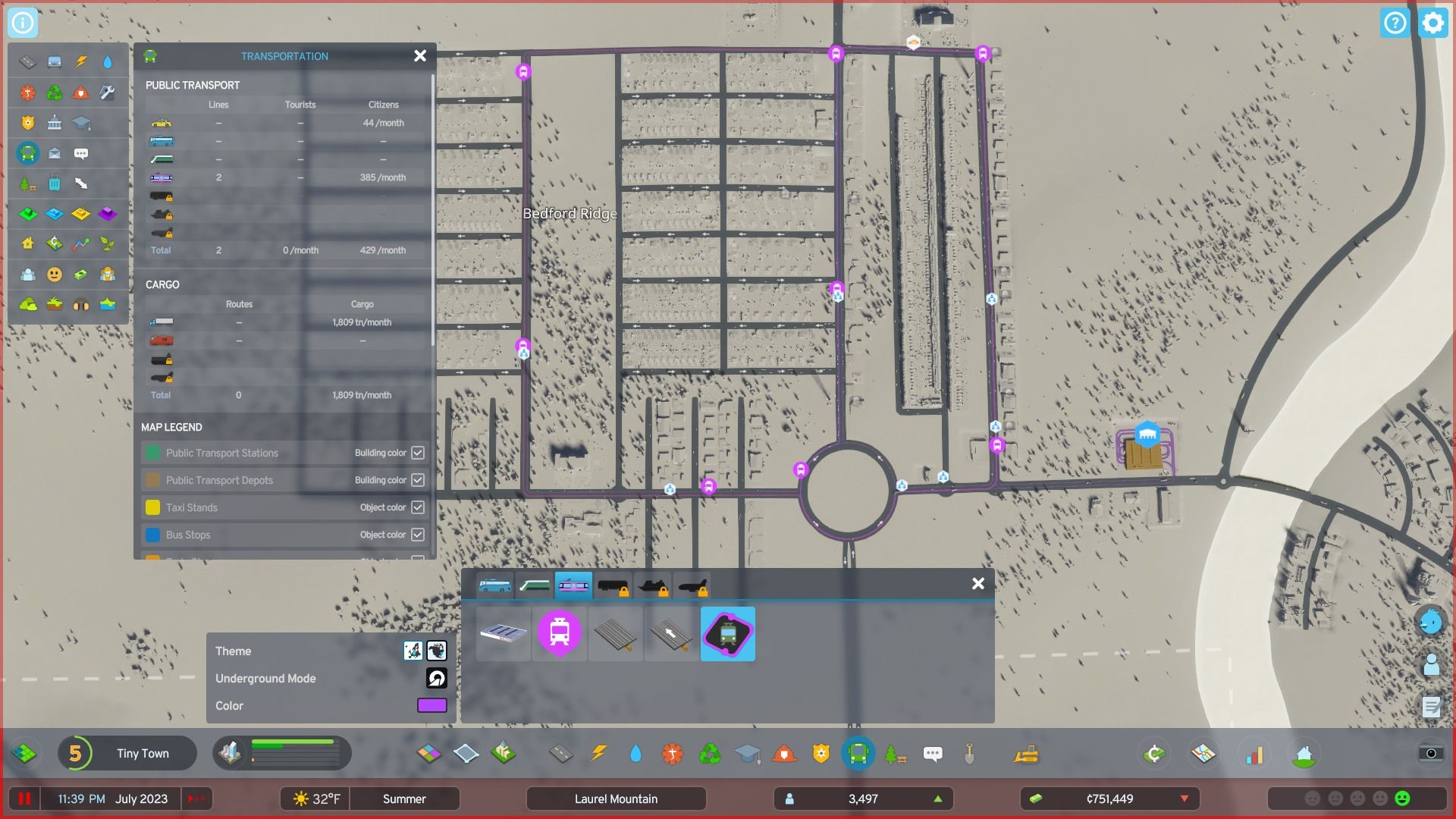
Mastering Tramway Construction in Cities: Skylines 2

Unlock and master the art of Trams in Cities: Skylines 2! Enhance your city's transportation system with this comprehensive guide on building and creating efficient Tram Lines Move passengers seamlessly and elevate your urban planning skills to new heights!
Mass transit is an essential feature in Cities: Skylines 2. By utilizing buses and metros, citizens refrain from driving and causing congestion on city streets. Additionally, mass transit facilitates the transportation of goods and reduces the presence of trucks on key roadways.
Although trams have already been introduced in the Cities: Skylines series, they were initially available only through downloadable content in the original game. In Cities: Skylines 2, trams are now integrated into the base game and serve as a beneficial substitute for buses. Nevertheless, players must familiarize themselves with optimal strategies for using trams effectively.
How to Unlock Trams
How to Build Tram Tracks
Unlocking Trams and Building Tracks
To begin, players need to establish a tram depot as their starting point. This versatile structure can be placed anywhere on the map, although it is advisable to position it away from densely populated areas due to its significant noise pollution. A single depot has the capacity to accommodate up to 10 trams, but with the Garage Extension upgrade, this limit can be increased to 15.
Players should begin by laying tram rails. These rails can be found in the Trams tab. There are two options for laying tram lines: creating independent tram lines or using the "Replace" tool mode to add them to existing roads. The roads can be small, medium, or large, but they cannot be highways or alleys. It is possible to highlight alleys with the Replace tool, but no tram tracks will be added. This is the case even if players choose the one-way tram track.
It is important to note that tram tracks must form a complete circuit. This means that a tram should be able to leave the depot, go around a loop without turning around, and then return to the depot. If a complete circuit is not formed, a warning pin will appear over the unconnected end of the track.
How to Create a Tram Line
Another important point to consider is that trams always have the right-of-way when constructed on roads. If a tram track is built on a one-way road, it will function as a one-way tram track regardless of whether players have chosen the double tram track option. However, tram tracks always pass through the center of roundabouts.
After players have successfully built a tram track that forms a complete loop and links to a depot, they are able to establish a tram line. The initial step involves setting up multiple tram stops along the route to cater to the needs of commuters.
Tram stops have the flexibility to be positioned anywhere along the tram track, even in areas that are not adjacent to roads. However, it is more common for citizens to utilize tram stops located on the roadside. In this case, the roadside tram stops will replace existing parking spaces or grassy areas with a wider sidewalk that extends up to the edge of the tram line. It is important for players to ensure that each tram stop is positioned either on the outer or inner side of the circuit to avoid the need for the tram to reverse its direction in order to complete its designated route.
If players wish to relocate a tram stop, they can achieve this by clicking on the sign of the respective tram stop to bring up its menu and subsequently selecting the "Relocate" button. The routes of any tram lines utilizing the particular stop will automatically be modified to accommodate the new location.
Next, let's proceed with creating the route. Open the tab and choose the tram line tool. Click on any of the tram stops to begin. Continue clicking on each stop in the desired order, and finally, click on the initial stop to complete the route. It's worth mentioning that trams will automatically return to the depot for maintenance when needed, so there's no need to include it in the route.
For those who wish to add new stops or make adjustments to a line's route, simply activate the Tram Line Tool and select a line. Then, drag it to create a new stop or waypoint. If you wish to remove a stop or waypoint, hover over it and click on the cancel button.
Players have the option to deactivate or permanently delete tram lines that are not performing well. To do this, first, go to the Transportation info view. Then, select the tram icon from the menu on the left. A list of all the tram lines will be displayed. From this list, players can change the color of each line, activate or deactivate them, or click on the trashcan icon to remove them.
Another choice is to adjust the ticket price. Lower prices will result in lower profits, but it may attract more passengers. Additionally, players can also modify the number of assigned vehicles. Longer routes naturally support more trams, but players can choose to have fewer for cost-cutting purposes or more to meet the demand.
Trams, like buses, adhere to traffic laws while traversing roadways, which can impede their speed and subject them to congestion. However, trams hold an advantage over buses due to their capacity to accommodate larger numbers of passengers. Moreover, they possess the flexibility to navigate shortcuts utilizing their designated tracks. For gaming enthusiasts, Cities: Skylines is currently accessible on PC, PS5, and Xbox Series X/S.









